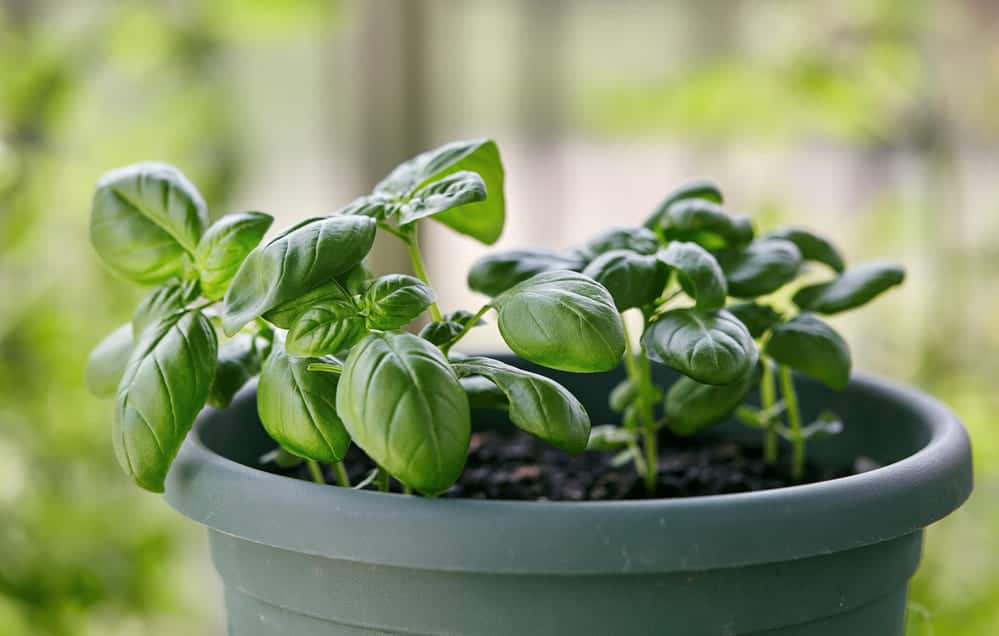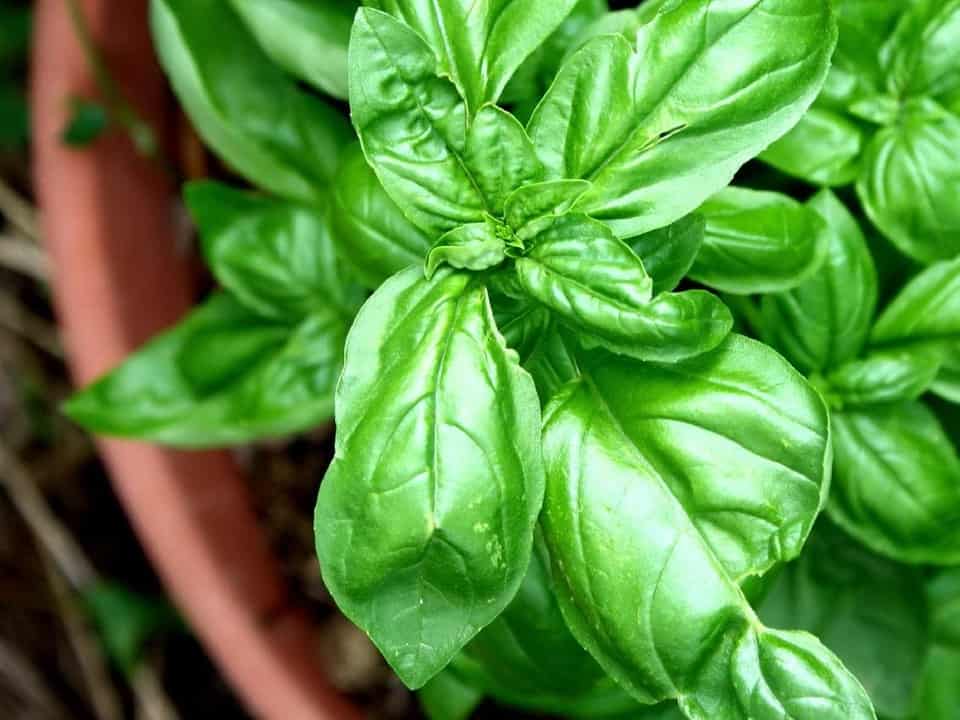Basil or Ocimum basilicum is a well-known spice plant that can improve the quality of almost every dish. Although it is often associated with Italian cuisine, this plant is native to the warm parts of India, from where it spread around the world and became one of the indispensable spices in almost every kitchen.
The extremely aromatic leaves also have a wonderful selection of flavors, from light lemon or sweet basil to cinnamon and licorice. The colors of the leaves range from rich green to deep purple, with smooth or crinkle leaves.
Although basil is generally a perennial, it is usually grown as an annual garden crop that dies with the first autumn frost. Depending on the climate conditions, its life cycle lasts 6 to 8 months. However, in USA climate zones 10 and 11, this plant can be grown as a perennial outside in the garden.
In other areas, the only way to keep the plant for more than one season is to grow it indoors in pots protected from low temperatures.
Also check: How Much Sun Does Basil Need?
Why does basil die at the end of the season?
Basil is a plant that has an accelerated development cycle. In other words, in just seven or eight months, the plant goes through all stages, from seed germination in March to a mature plant that is ready to produce seeds and new plants in June and July.
Originating from the warm regions of eternal summer, basil plants do not tolerate low temperatures. The combination of low temperatures and natural shortening of the day with the arrival of autumn has a detrimental effect on this plant.
In warmer regions, after flowering and seed formation, the plant enters a phase of total dormancy. It means that most leaves will wither and fall off, all physiological processes will be minimized, but the root of the plant stays alive and collects energy for new growth in the spring when the temperature rises and the days extend.
Growing basil indoors
If you don’t have a garden, that’s no reason to miss enjoying freshly picked basil leaves! If you want to grow basil at home in a pot, choose the seeds carefully.
There are about 60 different types of basil. Some of them, such as Sweet basil, are large shrubby plants that grow to a height of 2 or 3 feet or more.
Such species are not suitable for growing in pots, and it is much easier to grow them in the garden where they will have enough space for growth and development.
Dwarf species such as Dwarf Greek, that grow 5-6 inches are much easier to grow indoors. They will not take up much space, and you can grow them in a small pot on a kitchen window sill!
More: How Long Does Basil Take to Grow?
How to grow basil from seed?
Basil seeds are as tiny as poppy seeds, even reminiscent of them. They are very germinating, so it usually works well, even for absolute beginners. Here are brief instructions on growing:
- Sow the seeds very shallowly, and cover them with a tiny layer of soil. The best time for sowing is spring or early summer when daily temperatures reach 65 F.
- Cover the growing pot or cup with plastic wrap after the first watering.
- Remove the foil as soon as green sprouts appear, usually after 8 to 10 days. Continue watering carefully every day,
- Over the next month, the plant will form the first lateral branches. It is time to cut off the tops to encourage new branching.
- When the leaves grow to full size, which is in mid-May, you can start picking them. Tear off the tops regularly. Cutting the plant tips will stimulate new leaves to grow. It delays the flowering of the plant and prolongs the growing season. Protected from the cold, the basil plants in the house are often active, weeks after their relatives in the garden suffer from frost.
Do basil plants die after flowering?
The formation of flower buds indicates the next stage in plant development – flowering and seed production. It does not mean its end – it shows that the plant has reached maturity and can complete the seasonal circle by producing the seeds.
During this period, the plant directs most of its energy to create flowers and developing much fewer leaves.
Basil, which was planted in March will form the first flower buds at the end of May or the beginning of June. The flowers will appear for the next two months, in the hottest months of summer.
More: How Often to Water Basil?
If you tear off the flower buds, you will deceive the plant, and the leaf growth phase will be prolonged – instead of flowers, the plant will produce new fragrant aromatic leaves full of precious essential oils.
What to do with the basil flowers?
You can also cut the formed flowers — and thus encourage new growth. In principle, pruning basil is a recommended measure of care to allow the plant to develop a more compact and leafy form.
In addition, the cut flowers also have an aroma similar to the leaves alone in a milder concentration. You can place the flowers on the stems in a vase, enjoying its pleasant fragrance, or you can add individual tiny white flowers to a salad since the flowers are edible too!
When pollinated flowers produce the seed, it is the end of the annual growing season. After that, the plant will sporadically give only a few new leaves, after which it either dies or enters the dormant phase, depending on the way you treat it.
Potted basil – anual or perrenial?
Due to the availability of a large selection of seeds and the fact that the germination rate is very high, even as pot basil is much more often grown as a seasonal plant.
Most growers will agree that it is easier to start new plants in the spring than maintaining existing plants until the new growing season. However, this is not impossible as long as you can ensure the conditions listed below.
- In the fall, shorten your basil plant to approximately one-third of the total height.
- Choose the brightest possible position for your plant. The light will stimulate new growth and reduce dormancy effects. Sometimes, it is good to place artificial lighting next to the plant. To continue growing, it needs at least 6 to 8 hours of good lighting.
- Maintain a room temperature between 55 and 70 F.
- If you keep the plant on a window sill, wrap the pot in a cloth to prevent the roots from cooling down.
- Water the plant according to its needs. If only a few leaves appear during this period, do not overdo it with water. The leaves are the organs through which water exits the plant, so if there are not enough of them, water will unnecessarily retain around the plant root, likely causing the root rot.
- If the conditions are favorable, the plant will give more leaves. However, these leaves are usually paler and do not have a pronounced aroma, but you could still use them as a fresh spice for food.
- During this period, do not tear many leaves at once. Allow at least one-third to remain on the plant. Also, take only those leaves that have reached their full size.
Conclusion
It is significant to note that basil is a perennial with a short lifespan. Even in the best conditions, the basil plant will not leave more than two to four years, rarely longer.
After the first year, the central and lateral stems will begin to woody, and the intensity of the taste will weaken with each new season! After all, it could be said, that basil is grown as an annual with reason, isn’t it?



